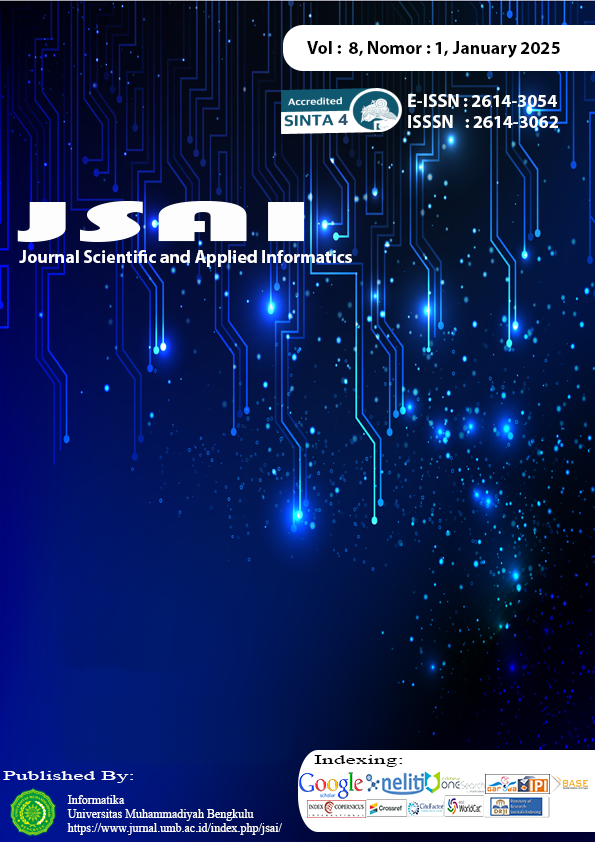Data-Driven Approach for the Development of a Poverty Rate Prediction Model in Indonesian Provinces
DOI:
https://doi.org/10.36085/jsai.v8i1.7596Abstract
Poverty in Indonesia remains a major issue that requires serious attention, particularly at the provincial level. Various factors, such as access to education, healthcare, and employment opportunities, affect the poverty rate. This study aims to develop a poverty prediction model using a data-driven approach through cluster analysis and classification. The methods used in clustering are K-Means, Hierarchical Clustering, and DBSCAN, while for classification, the algorithms applied are Random Forest, Naive Bayes, and Support Vector Machine (SVM). The clustering analysis results show that K-Means provides clearer cluster divisions with the highest Calinski-Harabasz Index value (179.45). In classification model testing, Naive Bayes provides the best results with an accuracy of 99.42%, which is higher than the other models. To address overfitting, cross-validation testing was conducted, yielding a Mean Accuracy of 99.32% and a Standard Deviatin of 0.23%. This study successfully identifies the factors influencing poverty levels in Indonesia’s provinces, which can be used as a basis for government policies in poverty alleviation efforts. The results achieved contribute significantly to the development of a more accurate and effective predictive model for addressing poverty issues in Indonesia.
Downloads
Published
Issue
Section
License
Copyright (c) 2025 Evi Purnamasari, Dwi Asa Verano

This work is licensed under a Creative Commons Attribution-NonCommercial-NoDerivatives 4.0 International License.







